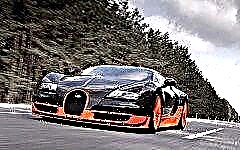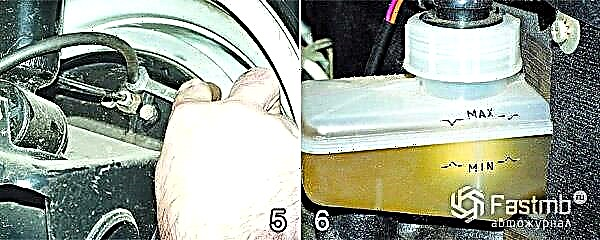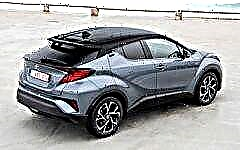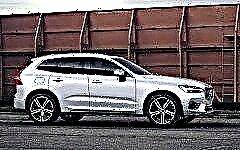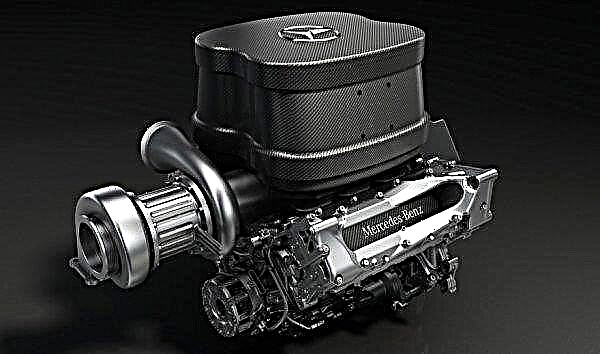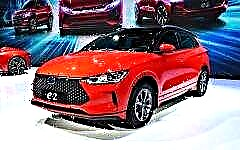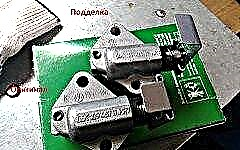

The content of the article:
- Motor oil
- Lamps
- Filters
- Spark plug
- Anti-counterfeiting methods
Any car owner wants his car to serve as long as possible without unpleasant breakdowns and expensive repairs. But if it is necessary to replace a failed unit, the motorist tries to install only the best on his car. Fraudsters willingly use this, flooding the market with fake spare parts.
It is profitable for fraudsters to counterfeit spare parts and consumables of famous brands, since they do not sit on the shelves for a long time. The production of counterfeit goods is mainly established in the countries of Southeast Asia, and China takes the lion's share in this "business". Is it possible to somehow protect yourself from fakes? What parts and consumables are most often counterfeited?
Motor oil

The smuggling market is very wide and it is difficult to list all the counterfeit parts. But there are four main positions that are most often forged:
- motor oil;
- lamps;
- filter;
- spark plug.
Engine oil is rightfully the leading counterfeit product - the easiest product to counterfeit. You just need to make a counterfeit container for sale, where you can pour any oil purchased on the market. Moreover, it is almost impossible to distinguish fake oil from the original by smell and color. A real paradise for scammers!
Cheap oil is bought, bottled in "original" cans and sent on sale to online stores, services and other trade organizations that are not very scrupulous about the quality of the incoming goods. Both the scammer and the point of sale have good profits. And the client himself does not immediately notice that a substandard product has been flooded.
Of course, over time, the wear of engine parts will be noticeable, even the failure of the motor itself is possible, but this will not happen immediately. The only thing is that if a modern diesel engine is used, which is designed to use only high-quality oil, its failure will be very quick.
How can you avoid buying a fake? First of all, try to buy oil from original car manufacturers who are represented by authorized dealers of the product. When purchasing a product from Gastrol or Mobil, try to find suppliers who will be mentioned on the official websites of these products. You will not get a 100% guarantee against counterfeiting, but it is much more reliable than buying machine oil on the regular market.
In addition, find information online about the features of the original brands of canisters - each supplier has its own nuances that a fake product does not have.
Lamps

Counterfeit lamps occupy an honorable second place among counterfeits. They are less bright and also get hotter, which can lead to damage to the lenses and reflectors of the headlights. Fake bulbs are not fragile and may have burrs on the threads or grinding marks. In addition, a fake can be identified by the incorrect shape of the base or by the unreliable fastening of the glass bulb to the lamp body. The network will also find information on how to distinguish an original product from a fake one.
Filters

It is quite profitable for scammers to counterfeit filters, especially if they use famous brands. At risk are filters from Mann-Filter and Mahle / Knecht. It just doesn't make sense to counterfeit cheaper goods.
To protect yourself from low-quality filters, carefully study the packaging of the goods and check for the presence of company stamps, which should be clearly visible. It is important to know that counterfeit products will not have the properties of the originals, and the filter elements are not those auto parts that are worth saving on.
The use of a low-quality oil or fuel filter can lead to rapid engine wear, which will entail expensive repairs - saving a few rubles is not worth the risk.
Spark plug

It is also very easy to meet low-quality candles on the market - you can calculate a fake product by fuzzy printing on the packaging of the product. Fake candles differ from the original ones:
- the presence of burrs or chips on the thread;
- poor-quality markings, which can be easily disposed of with any sharp object;
- electrodes that are crooked and have an irregular cylindrical shape;
- a removable O-ring that cannot be unscrewed on the original product.
Anti-counterfeiting methods

First of all, try to purchase spare parts and consumables from already proven dealers with whom you have been cooperating for a long time, since it depends on the seller what quality product you buy. Of course, there are traders who value their reputation and do not allow counterfeits to appear on their shelves.
Do not think that only small organizations can trade in fakes - wholesalers also sin with this, so find out through your friends a high-quality service where the risk of buying a fake product is minimal.
If, after purchasing a product, you are unhappy with its quality, do not immediately write it off as a fake. It is possible that a poor-quality installation of a new part was made, which led to the appearance of squeaks. Find information on what there may be signs that the new part has been fixed poorly. It is possible that the seller has absolutely nothing to do with it.
Special attention should be paid to the cars of the Chinese car industry. It is extremely difficult to distinguish a fake part from an original one - this can often only be done by specialists.
Is it possible to get rid of counterfeits fundamentally by stopping the supply of low-quality goods to the market? Unfortunately, this is almost impossible, since some motorists are trying to save money, and this only encourages fraudsters. If buyers become more competent in the purchase of spare parts, return low-quality goods and leave negative reviews from sellers, it will become more expensive to trade in fakes.


